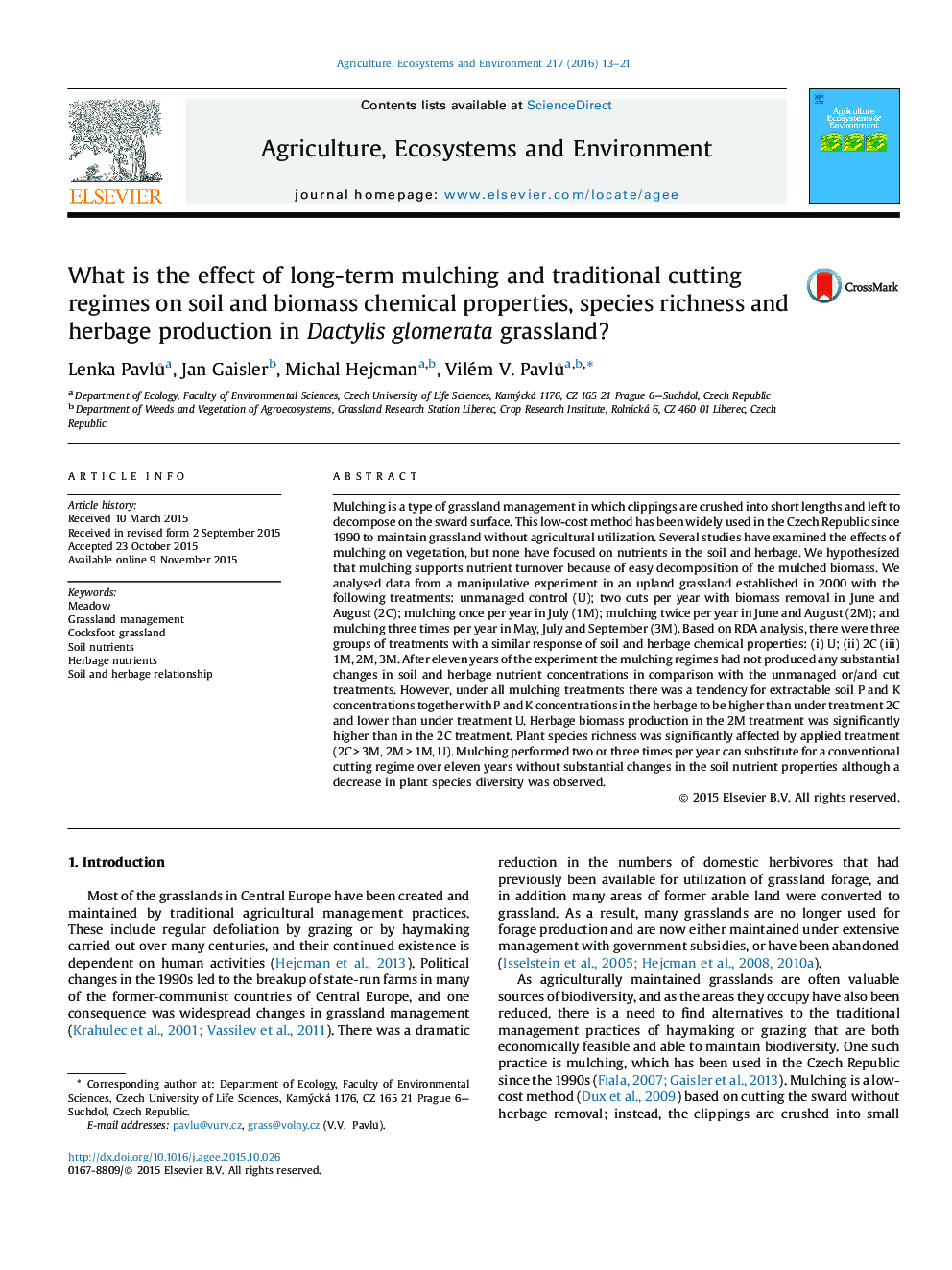| کد مقاله | کد نشریه | سال انتشار | مقاله انگلیسی | نسخه تمام متن |
|---|---|---|---|---|
| 2413665 | 1552035 | 2016 | 9 صفحه PDF | دانلود رایگان |

• Changes in plant-available nutrients under the different managements were slow.
• Mulching regimes did not change substantially the plant-available nutrients.
• The relationship between P, K content in the soil and species richness was negative.
• Mulching performed over eleven years can substitute for conventional agricultural cutting.
Mulching is a type of grassland management in which clippings are crushed into short lengths and left to decompose on the sward surface. This low-cost method has been widely used in the Czech Republic since 1990 to maintain grassland without agricultural utilization. Several studies have examined the effects of mulching on vegetation, but none have focused on nutrients in the soil and herbage. We hypothesized that mulching supports nutrient turnover because of easy decomposition of the mulched biomass. We analysed data from a manipulative experiment in an upland grassland established in 2000 with the following treatments: unmanaged control (U); two cuts per year with biomass removal in June and August (2C); mulching once per year in July (1M); mulching twice per year in June and August (2M); and mulching three times per year in May, July and September (3M). Based on RDA analysis, there were three groups of treatments with a similar response of soil and herbage chemical properties: (i) U; (ii) 2C (iii) 1M, 2M, 3M. After eleven years of the experiment the mulching regimes had not produced any substantial changes in soil and herbage nutrient concentrations in comparison with the unmanaged or/and cut treatments. However, under all mulching treatments there was a tendency for extractable soil P and K concentrations together with P and K concentrations in the herbage to be higher than under treatment 2C and lower than under treatment U. Herbage biomass production in the 2M treatment was significantly higher than in the 2C treatment. Plant species richness was significantly affected by applied treatment (2C > 3M, 2M > 1M, U). Mulching performed two or three times per year can substitute for a conventional cutting regime over eleven years without substantial changes in the soil nutrient properties although a decrease in plant species diversity was observed.
Journal: Agriculture, Ecosystems & Environment - Volume 217, 1 February 2016, Pages 13–21